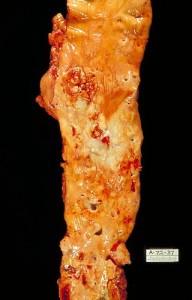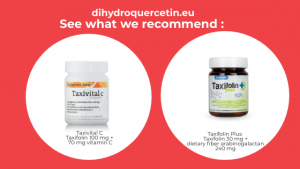Complications of diabetes are most commonly associated with damaged blood vessels, atherosclerosis, coronary artery disease, damage to the retina of the eye and kidney disease. The disease can last for years before being detected, which is very dangerous, as even a small increase in blood sugar levels can damage the blood vessels and accelerate atherosclerotic processes. Therefore, diabetes should not be underestimated, even if this is the initial stage of development of this disease, because it contributes to the development of atherosclerosis, and this is the most common cause of death. High blood sugar levels helps the formation of atherosclerotic plaques, gradually tapered diameter of the coronary arteries.

A change in the metabolism of the heart cells causes an increased need for nutrients with limited blood supply. This is the cause of myocardial ischemia, which can lead to heart attack, heart failure and sudden death of a heart. The risk of heart attack in hospitalised patients with diabetes is very large. Diabetics must therefore pay particular attention to the control of the General State of health and rapid response in the event of distressing symptoms.
High blood glucose levels contributes to the development of oxidative stress as a result of increased production of reactive oxygen species (RFT) and/or weakening of the defensive function of antioxidants. Signs of oxidative stress in children suffering from diabetes and not having any complications yet changes in diabetic it is already at the time of disease diagnosis, what demonstrates that oxidative stress is not the result of diabetic complications, but is related to the course of the disease.
Changes in lipid profile in type 2 diabetes most often rely on increased concentration of triglycerides, and reduced concentration of cholesterol HDL. LDL Cholesterol is characterised by a predisposition to create small, dense, TG-rich particles that are more easily undergo oxidative modification and is cytotoxic on vascular endothelium by increasing atherogenesis. As a result of the severity of the action of endogenous antioxidant systems are exhausted and RFT, while the presence of plasma lipid fractions of quantitative, comes to lipid peroxidation of lipids, the result is the formation of malonic dialdehydu (MDA), fatty hydroperoxides acids, conjugated dienes also only and oksycholesterols. In addition, it has been shown that LDL glicooxidized molecule have the ability induce the synthesis of antibodies that stimulate the secretion of interleukins, adhesion molecules, thereby initiating the process of aterogenesy. A high concentration of glucose also contributes to the direct stimulation of Neutrophilic granulocytes, which leads to the production of a large amount of oxygen radicals. Especially damaging arteries malondialdehyde (MDA) ,the relationship is formed during digestion of fats. It has a negative impact on the heart. After lunch, MDA level in bold to grow five-fold.
Among the factors that stimulate excessive production of reactive oxygen species also noteworthy is tobacco smoke. As a result of tobacco consumption drops the content of antioxidants as a result of the low free radical molecular weight molecules increase in intensity degradation of proteins and lipids in the blood.
Separate studies of patients with diabetes and smoking tobacco clearly showed increased morbidity and increased risk of premature death associated with the development of macrovascular complications in this group. Smoking is also associated with premature onset of peripheral microvascular complications and may contribute to the pathogenesis of type 2 diabetes. Tobacco smoke increases inflammation in blood vessels, through the activation of macrophages, which accelerates the atherosclerotic process due to toxic damage to the endothelium. Besides cigarette smoking affects the reduction in HDL, and increasing hypoxia enhances the proliferation of vascular intima and increase the permeability of the vascular endothelium. In addition, tobacco smoke can affect an increase in blood viscosity and coagulation processes imbalance and fibrinolysis. Currently, intensive research carried out whose purpose is to evaluate the potential benefits from the application of measures of natural origin, in prevention and treatment of chronic diseases, including diabetes and cardiovascular diseases. In recent years, an increasing number of evidence indicating that taxifolin is having a beneficial effect on the body and may be useful in the prevention and treatment of certain metabolic disorders, including diabetes.
In a controlled study (Nedosugova, LV, et al. Clinical Pharmacology and therapy, 4 (2000) 65-67) has been applied taxofilin in conjunction with traditional treatment. It has been observed that decreased lipid peroxidation (LPO) in erythrocyte membranes, decreased levels of malonic dialdehyde (MDA), increased activity of superoxide dismutase (SOD), catalase, and Glutathione peroxidase of red blood cells (RBC). However, the Taxofilin also activation and platelet aggregation in patients with type 2 diabetes.
1/ Oxidative Stress and Diabetic Retinopathy Renu A. Kowluru* and Pooi-See Chan Exp Diabetes Res. 2007; 2007: 43603. Published online Apr 12, 2007. doi: 10.1155/2007/43603
http://www.ncbi.nlm.nih.gov/pmc/articles/PMC1880867/
2/ Oxidative stress and diabetic retinopathy: pathophysiological mechanisms and treatment perspectives, Madsen-Bouterse SA, Kowluru RA K-404, Kresge Eye Institute, Wayne State University, 4717 St. Antoine, Detroit, MI, 48201, USA Rev Endocr Metab Disord. 2008 Dec;9(4):315-27. doi: 10.1007/s11154-008-9090-4.
http://www.ncbi.nlm.nih.gov/pubmed/18654858
3/The importance of prooxido -antioxidant status for ethiopathology diabetes dr n. med. Margaret Mrowicka, Department of chemistry and Clinical Biochemistry, Medical University of Łódź Cathedral of Biomedical foundations of physiotherapy, Department of chemistry and Clinical Biochemistry. Progress Hig Med Dosw. (online), 2011; 65: 534-541
http//www.phmd.pl/fulltxthtml.php?ICID=9560854/
4/ The second face of oxygen. Free-radical in nature, G. Bartosz, Warszawa 2008, page: 252-255.
